Guang Yang and Andrew Westover of Oak Ridge National Laboratory have been selected to join the first cohort of the Department of Energy’s Advanced Research Projects Agency-Energy, or ARPA-E, Inspiring Generations of New Innovators to Impact Technologies in Energy 2024, or IGNIITE 2024, program.
Tag: Oak Ridge National Laboratory
By Mimicking Cicada Wings, Scientists Are Investigating New Ways to Keep Patients Safe
Cicada’s cries ring out in the hot air and their discarded exoskeletons decorate tree branches in the southeast and midwest United States at the height of summer. While their ability to emerge in huge numbers is astounding, they have other surprising features too. In fact, their wings kill bacteria on contact and are self-cleaning. Researchers using the Department of Energy’s (DOE) Oak Ridge National Laboratory and Brookhaven National Laboratory user facilities investigated this bizarre phenomenon. They learned how structures in the cells are able to pull off such a feat and how it could be used in medical applications.
Tennessee institutions partner to develop dependable AI for national security applications
At the Tennessee Valley Corridor Summit 2024 in Nashville, Tenn., on Wednesday, Vanderbilt University and Oak Ridge National Laboratory announced a partnership to develop training, testing and evaluation methods that will accelerate the Department of Defense’s adoption of AI-based systems in operational environments.
Promethium bound: Rare earth element’s secrets exposed
Scientists have uncovered the properties of a rare earth element that was first discovered 80 years ago at the very same laboratory, opening a new pathway for the exploration of elements critical in modern technology, from medicine to space travel.
Ion swap dramatically improves performance of CO2-defeating catalyst
A team of scientists led by the Department of Energy’s Oak Ridge National Laboratory found an unconventional way to improve catalysts made of more than one material. The solution demonstrates a path to designing catalysts with greater activity, selectivity and stability.
United Kingdom Invests in DOE’s Electron-Ion Collider Project to Understand Matter at the Smallest Scale
The U.S. Department of Energy’s (DOE) Electron-Ion Collider (EIC), a unique international particle collider being constructed to explore the building blocks of matter at the smallest scale, will get a significant boost from colleagues in the United Kingdom (UK).
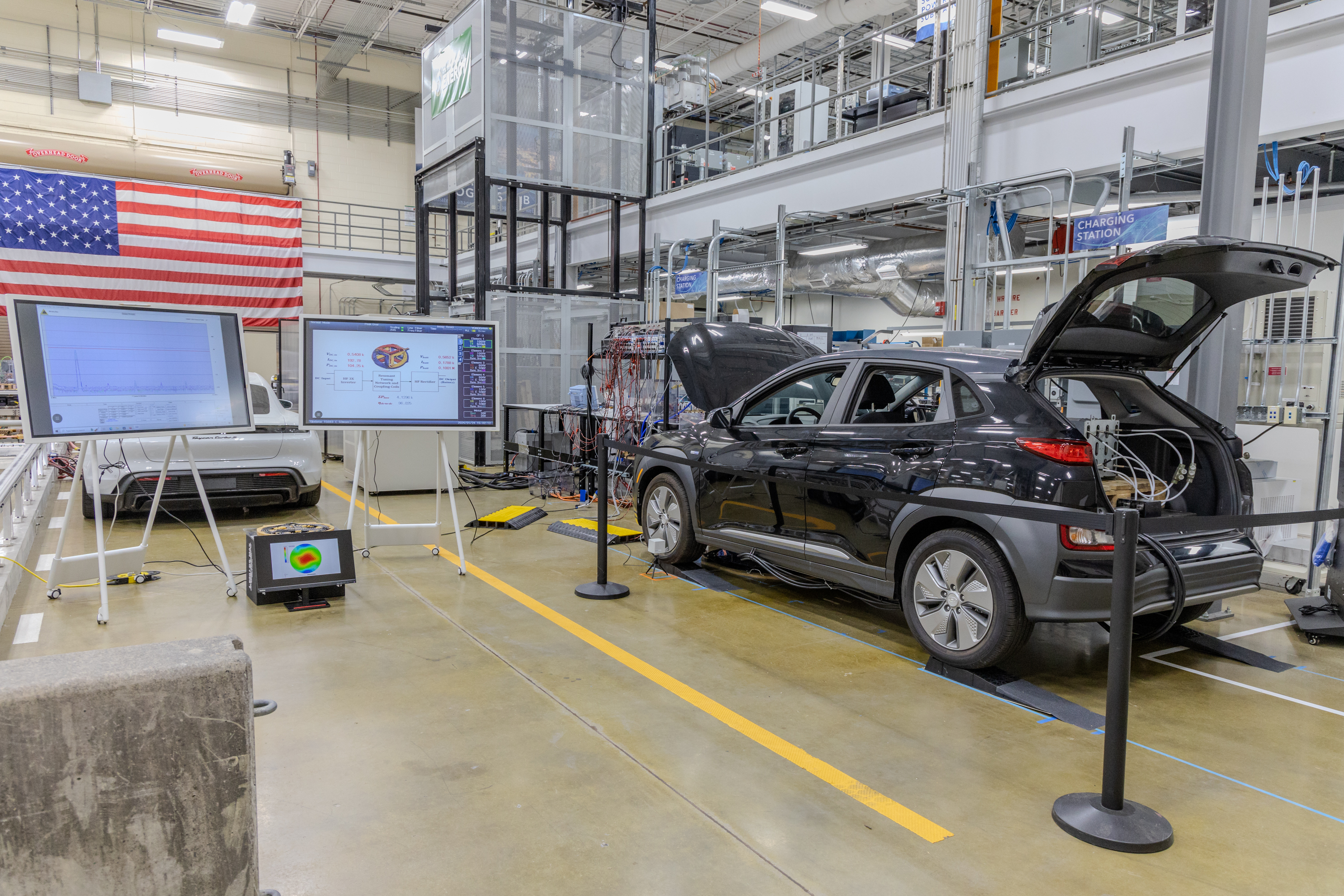
Charging up the commute
A team of researchers at ORNL demonstrated that a light-duty passenger electric vehicle can be wirelessly charged at 100-kW with 96% efficiency using polyphase electromagnetic coupling coils with rotating magnetic fields.
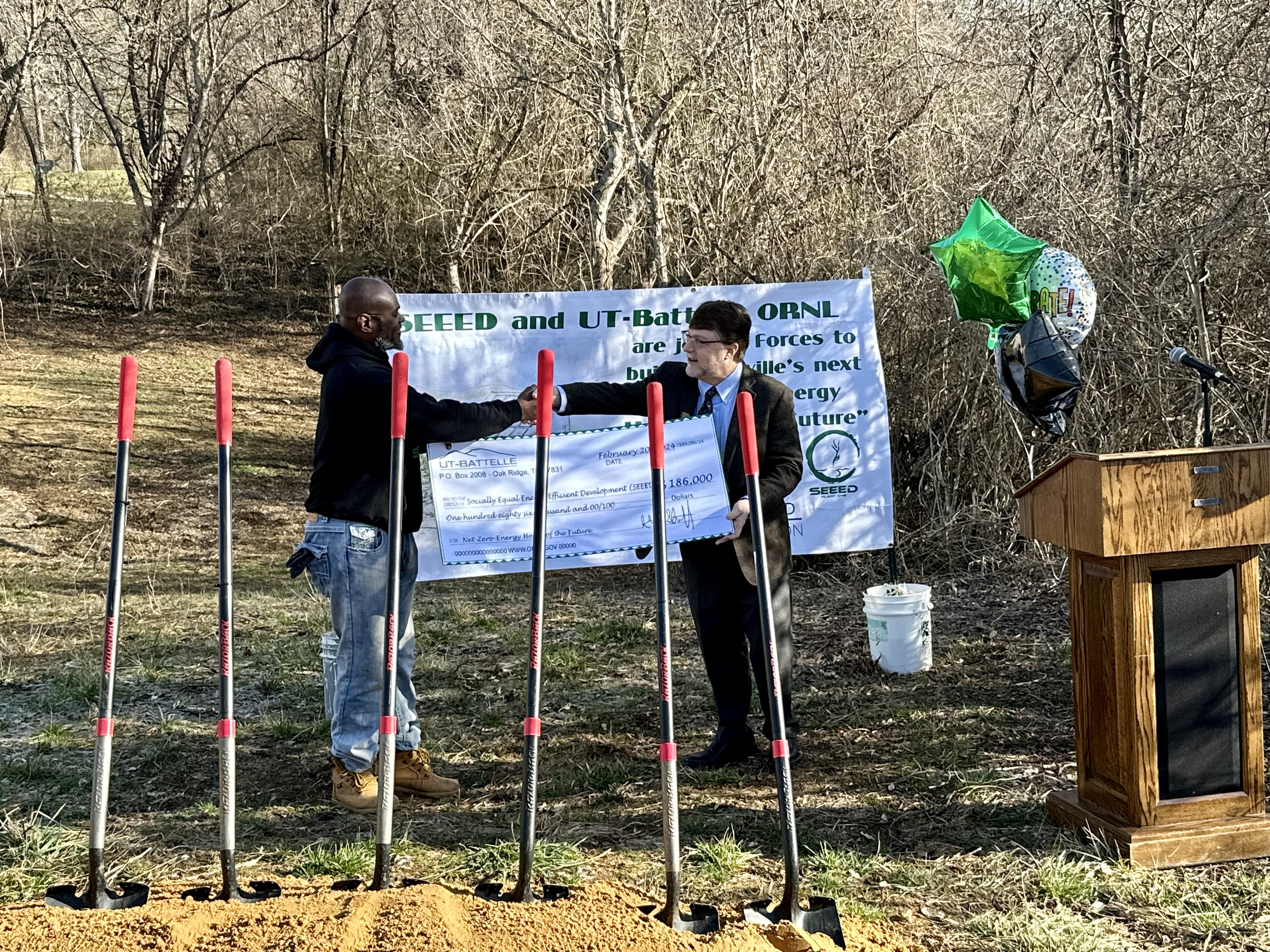
UT-Battelle donates $186,000 to support SEEED’s green construction program
Oak Ridge National Laboratory’s managing contractor, UT-Battelle, presented a donation of $186,000 to Socially Equal Energy Efficient Development, or SEEED, to support the nonprofit’s third green solar home as part of their Green Construction Program.
New process allows full recovery of starting materials from tough polymer composites
In a win for chemistry, inventors at the Department of Energy’s Oak Ridge National Laboratory have designed a closed-loop path for synthesizing an exceptionally tough carbon-fiber-reinforced polymer and later recovering all of its starting materials.

ORNL’s Sholl elected to National Academy of Engineering
David Sholl, director of the Transformational Decarbonization Initiative at Oak Ridge National Laboratory, has been elected a member of the National Academy of Engineering for his contributions in addressing large-scale chemical separation challenges, including carbon dioxide capture, using quantitative materials modeling.
Employee-led giving at ORNL nets $967,871 for area nonprofits
Employees of the Department of Energy’s Oak Ridge National Laboratory contributed over $828,000 to local nonprofits through the lab’s employee giving programs in 2023.
EPB, ORNL announce plans for research collaborative focused on energy resilience, quantum technology
Building on $180 million in joint energy-related research, EPB and Oak Ridge National Laboratory marked 10 years of collaboration Friday with the announcement of the new Collaborative for Energy Resilience and Quantum Science, or CERQS.
Researchers demonstrate novel technique to observe molten salt intrusion in nuclear-grade graphite
In response to a renewed international interest in molten salt reactors, researchers from the Department of Energy’s Oak Ridge National Laboratory have developed a novel technique to visualize molten salt intrusion in graphite.
At the root of bulked-up plants
Oak Ridge National Laboratory scientists identified a gene “hotspot” in the poplar tree that triggers dramatically increased root growth. The discovery supports development of better bioenergy crops and other plants that can thrive in difficult conditions while storing more carbon belowground.
New Oak Ridge National Lab director emphasizes mission impact
Stephen Streiffer began his tenure as director of Oak Ridge National Laboratory with a focus on enabling staff members, an awareness of the laboratory’s rich history and a commitment to addressing the most significant scientific and technical challenges.
DOE Announces $264 Million for Basic Research in Support of Energy Earthshots™
The U.S. Department of Energy (DOE) today announced $264 million in funding for 29 projects to develop solutions for the scientific challenges underlying DOE’s Energy Earthshots™ Initiative to advance clean energy technologies within the decade. The funding will support 11 new Energy Earthshot Research Centers led by DOE National Laboratories and 18 university research teams addressing one or more of the Energy Earthshots™ that are focused on six different areas, including industrial decarbonization, carbon storage, and offshore wind. The Department launched the Energy Earthshots Initiative to spur decarbonization efforts that will help the United States meet President Biden’s ambitious climate and clean energy goals, including a 50% reduction in carbon emissions by 2030 and a net-zero carbon economy by 2050.
Light-activated acid drives energy-efficient, on-demand release of captured CO2
Using light instead of heat, Oak Ridge National Laboratory researchers found a way to release carbon dioxide from a solvent used in direct air capture to trap this greenhouse gas.
Scientists uncovered mystery of important material for semiconductors at the surface
A team of scientists with Oak Ridge National Laboratory has investigated the behavior of hafnium oxide, or hafnia, because of its potential for use in novel semiconductor applications.
Department of Energy Announces $73 Million for Basic Research to Accelerate the Transition from Discovery to Commercialization
Today, the U.S. Department of Energy (DOE) announced $73 million in funding for eleven projects which focus on the goal of accelerating the transition from discovery to commercialization of new technologies that will form the basis of future industries.
Department of Energy Announces $24 Million for Research on Quantum Networks
Today, the U.S. Department of Energy (DOE) announced $24 million in funding for three collaborative projects in quantum network research.
ORNL buildings researchers earn top ASHRAE honors
Kashif Nawaz and Mahabir Bhandari, building technologies researchers at the Department of Energy’s Oak Ridge National Laboratory, were recognized for research achievements in support of ASHRAE during the 2023 annual conference of the national heating, refrigerating, and air-conditioning engineering society.

Safe train transport
Oak Ridge National Laboratory researchers used images from a photo-sharing website to identify crude oil train routes across the nation to provide data that could help transportation planners better understand regional impacts.
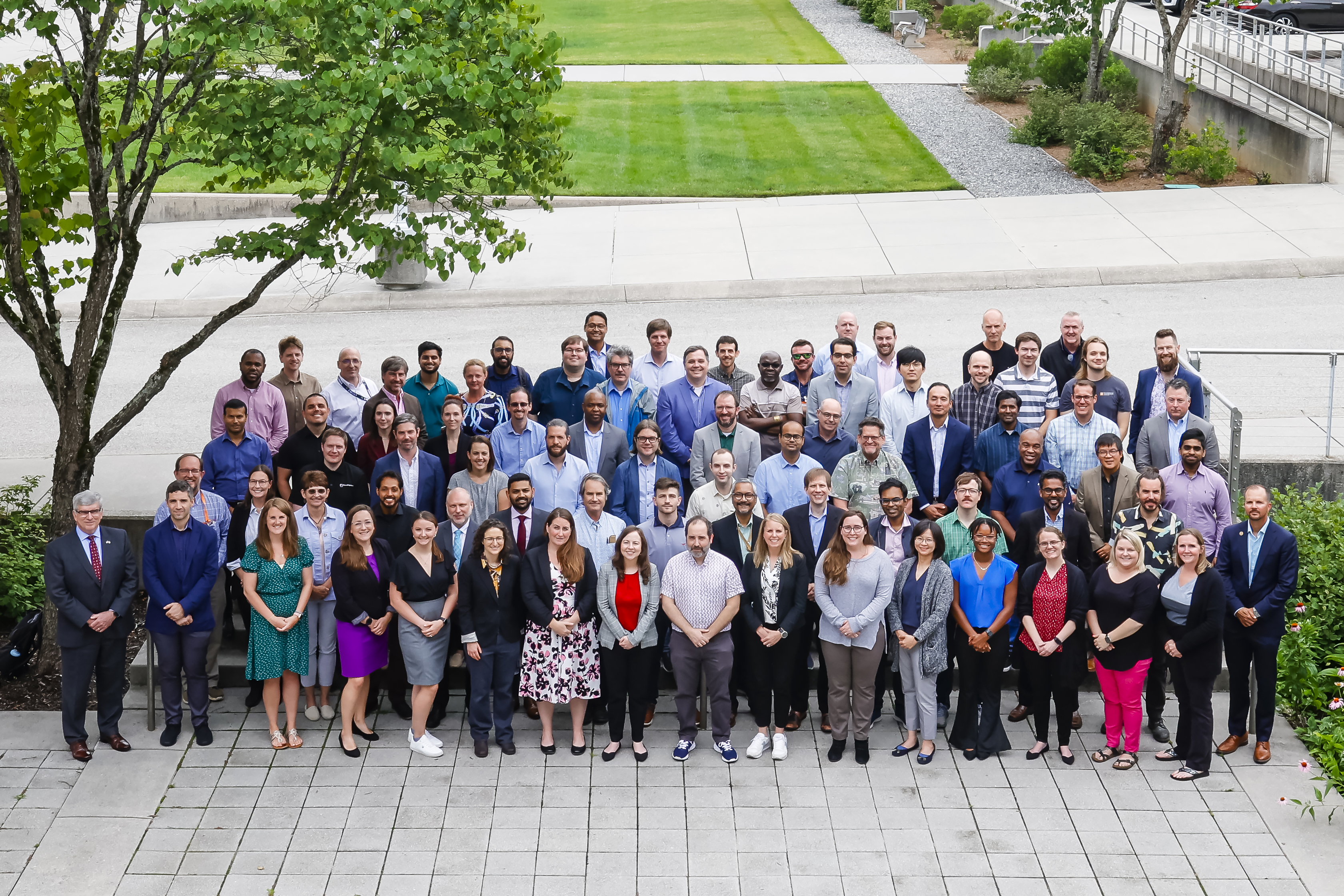
Trillion-Pixel Challenge looks ahead to next decade of GeoAI innovation
Experts across varied technology fields gathered at the Department of Energy’s Oak Ridge National Laboratory to collaborate on the future of geospatial systems at the Trillion-Pixel GeoAI Challenge workshop. The third iteration of this event focused on multimodal advances in the field, including progress in artificial intelligence, cloud infrastructure, high-performance computing and remote sensing.

Neutrons look inside working solid-state battery to discover its key to success
Researchers used neutrons to peer inside a working solid-state battery and discovered that its excellent performance results from an extremely thin layer, across which charged lithium atoms quickly flow as they move from anode to cathode and blend into a solid electrolyte.
Superlubricity coating could reduce economic losses from friction, wear
Scientists at the Department of Energy’s Oak Ridge National Laboratory have invented a coating that could dramatically reduce friction in common load-bearing systems with moving parts, from vehicle drive trains to wind and hydroelectric turbines.
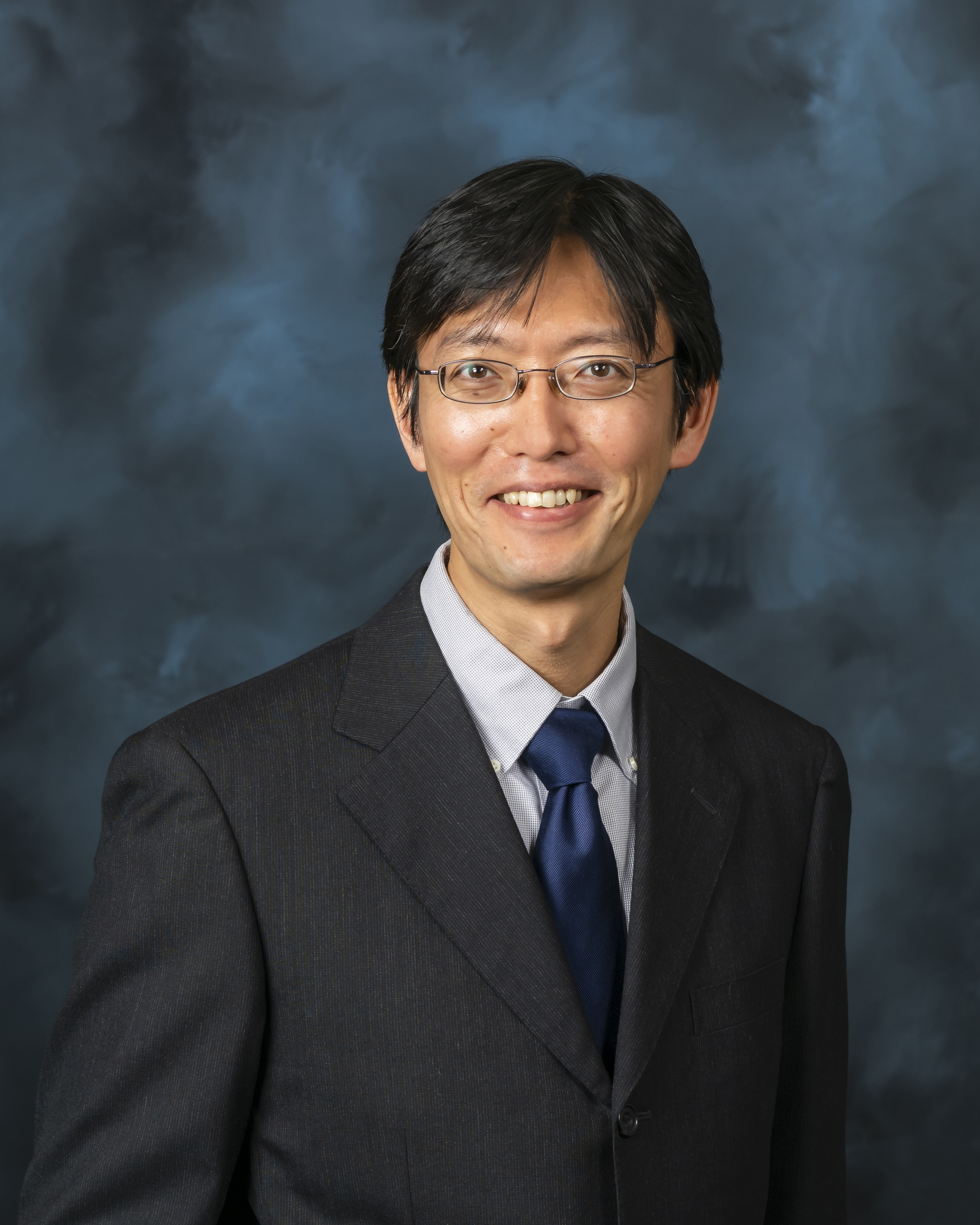
ORNL inventor Tomonori Saito honored at Battelle Celebration of Solvers
Tomonori Saito, a distinguished innovator in the field of polymer science and senior R&D staff member at the Department of Energy’s Oak Ridge National Laboratory, was honored on May 11 in Columbus, Ohio, at Battelle’s Celebration of Solvers.
Andrew Ullman, Wigner Fellow, gets a charge out of batteries
As a Distinguished Staff Fellow in the Chemical Sciences Division focused on energy storage and conversion, Andrew Ullman of Oak Ridge National Laboratory is using chemistry to devise a better battery.
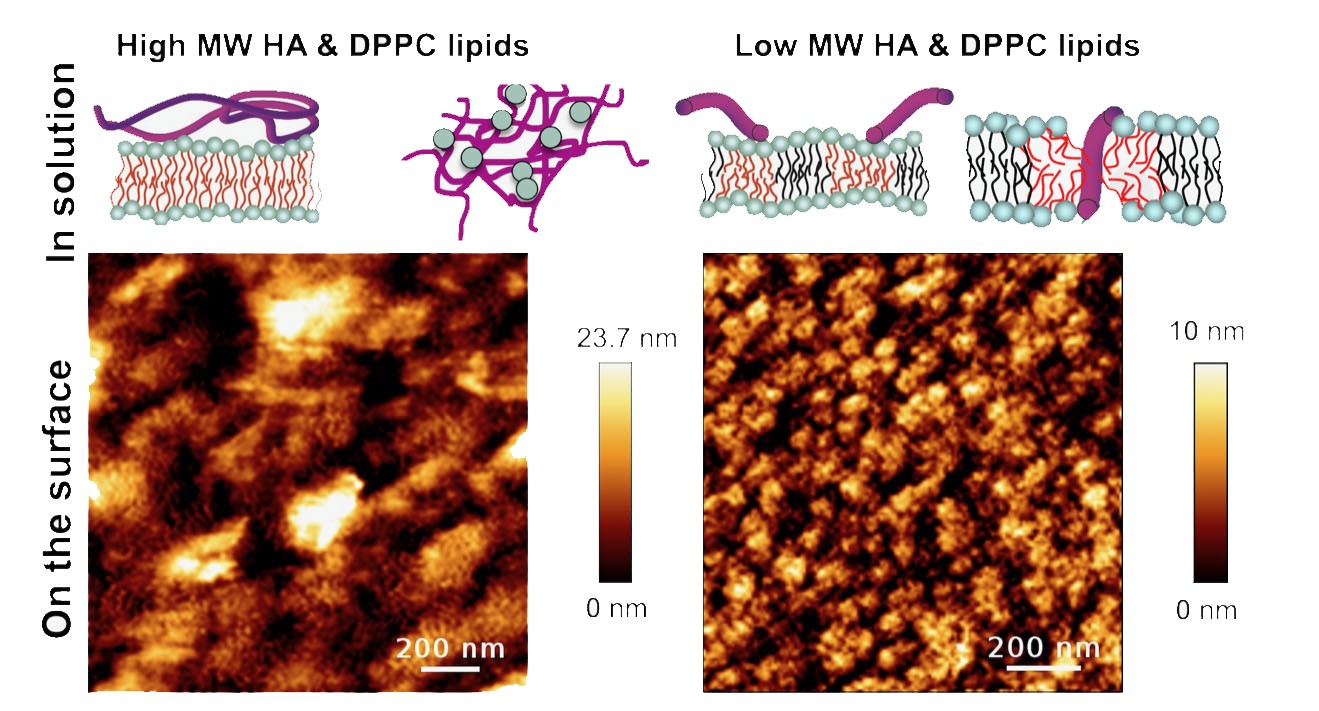
Composition of Joint Lubricant Potential Culprit Behind Osteoarthritis
The exact mechanism of cartilage breakdown in osteoarthritis is unknown, but damage from mechanical stress with insufficient self-repair is believed to be the main culprit. The composition of synovial fluid, or joint lubricant, changes significantly: The concentration and molecular weight of hyaluronic acid tends to decrease. In Biointerphases, researchers explore the disease-driven breakdown of hyaluronan and the mechanistic implications of these changes on the lubrication and subsequent wear of joints.
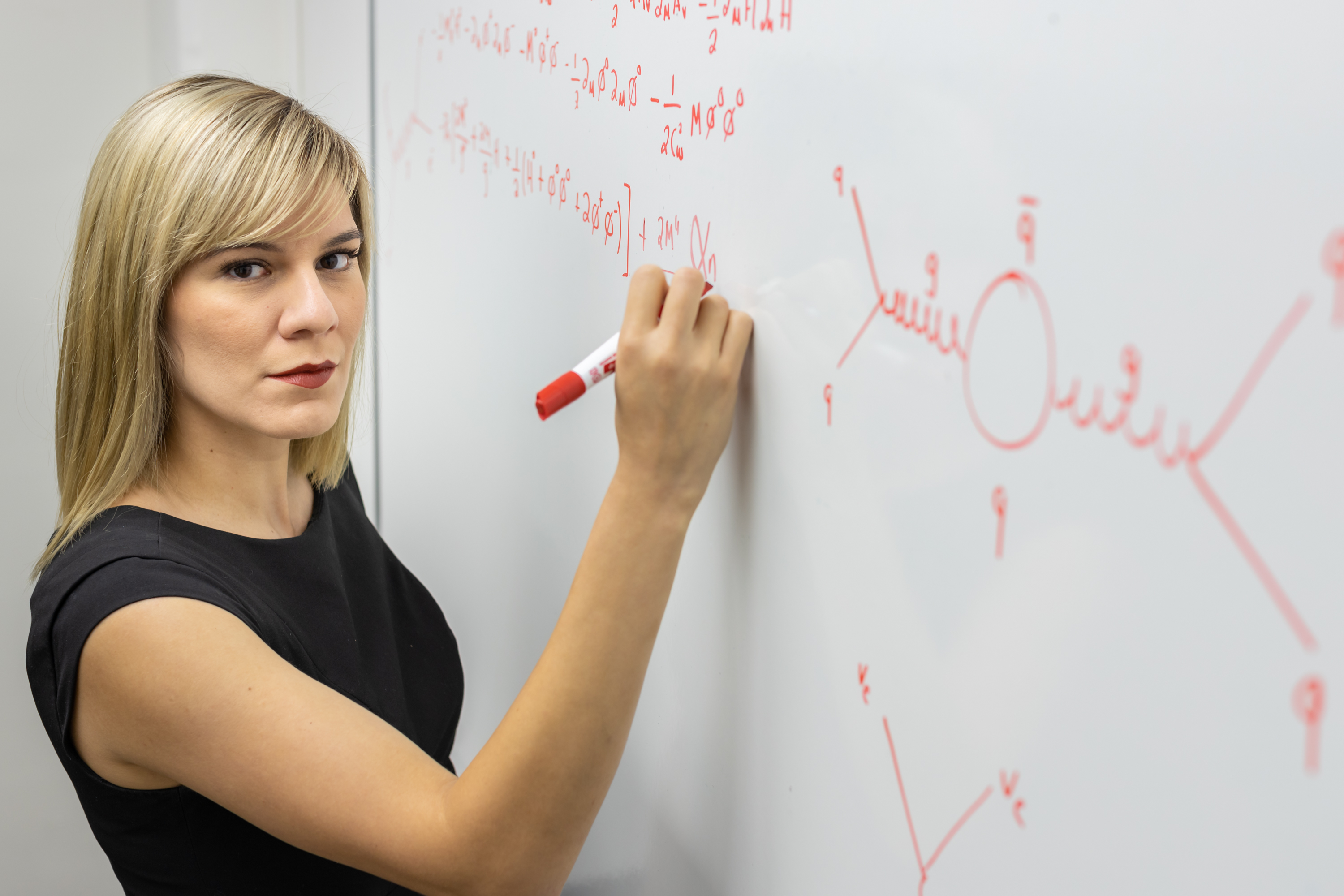
Andrea Delgado unites fundamental, high energy physics with quantum computing
Andrea Delgado, a Eugene P. Wigner Fellow at the Department of Energy’s Oak Ridge National Laboratory, is using quantum computing to help investigate the fundamental building blocks of the universe and to see whether there are particles yet to be found.

ORNL’s Lee named Materials Research Society Fellow
Ho Nyung Lee, a condensed matter physicist at the Department of Energy’s Oak Ridge National Laboratory, has been elected a Fellow of the Materials Research Society.
Add-on device makes home furnaces cleaner, safer and longer-lasting
Scientists at Oak Ridge National Laboratory have developed an affordable add-on acid gas reduction technology that removes 99.9% of acidic gases and other emissions to produce an ultraclean natural gas furnace. The AGR technology can also be added to other natural gas-driven equipment.
Celeritas code will accelerate high energy physics simulations with supercomputers
Scientists at the Department of Energy’s Oak Ridge National Laboratory are leading a new project to ensure that the fastest supercomputers can keep up with big data from high energy physics research.
Army strong: Research teams join forces to invent weld wire for tank, infrastructure repair
The U.S. Departments of Energy and Defense teamed up to create a series of weld filler materials that could dramatically improve high-strength steel repair in vehicles, bridges and pipelines. This novel weld wire could help revitalize America’s aging infrastructures, which in 2021 received a C- grade from the American Society of Civil Engineers.
Department of Energy Announces Two 2022 Office of Science Distinguished Scientist Fellows
The Department of Energy (DOE) announced two national laboratory scientists as DOE Office of Science Distinguished Scientist Fellows. This honor, authorized by the America COMPETES Act, is bestowed on national laboratory scientists with outstanding records of achievement. The award provides each Fellow with $1 million over three years to support activities that develop, sustain, and promote scientific and academic excellence in DOE Office of Science research.
Lab experiments support COVID-19 bradykinin storm theory
A new paper published in Nature Communications adds further evidence to the bradykinin storm theory of COVID-19’s viral pathogenesis — a theory that was posited two years ago by a team of researchers at the Department of Energy’s Oak Ridge National Laboratory.
Magnetic quantum material broadens platform for probing next-gen information technologies
Scientists at Oak Ridge National Laboratory used neutron scattering to find the first 2D system to host a spiral spin liquid.
Physicists confront the neutron lifetime puzzle
To solve a long-standing puzzle about how long a neutron can “live” outside an atomic nucleus, physicists entertained a wild but testable theory positing the existence of a right-handed version of our left-handed universe.
ORNL, partners launch first experiments using new facility to make cosmic isotopes on Earth
A new flagship facility for nuclear physics has opened, and scientists from Oak Ridge National Laboratory have a hand in 10 of its first 34 experiments.
After 20 years of trying, scientists succeed in doping a 1D chain of cuprates
After 20 years of trying, scientists doped a 1D copper oxide chain and found a surprisingly strong attraction between electrons that may factor into the material’s superconducting powers.
Cao receives Young Investigator Award from American Chemical Society
Pengfei Cao, a polymer chemist at the Department of Energy’s Oak Ridge National Laboratory, has been chosen to receive a 2021 Young Investigator Award from the Polymeric Materials: Science and Engineering Division of the American Chemical Society.
UAH’s Baudry Lab part of half-million-dollar efforts to target COVID with drug therapies
Two different strategies to discover and perfect pharmaceuticals active against the COVID-19 virus have attracted a half million dollars in research funding to support five institutions, including the Baudry Lab at The University of Alabama in Huntsville (UAH).
Tiny but mighty precipitates toughen a structural alloy
Scientists at Oak Ridge National Laboratory and the University of Tennessee, Knoxville, have found a way to simultaneously increase the strength and ductility of an alloy by introducing tiny precipitates into its matrix and tuning their size and spacing.
ORNL’s Sergei Kalinin elected Fellow of the Microscopy Society of America
Sergei Kalinin, a scientist and inventor at the Department of Energy’s Oak Ridge National Laboratory, has been elected a Fellow of the Microscopy Society of America professional society.
ORNL’s superb materials expertise, data and AI tools propel progress
At the Department of Energy’s Oak Ridge National Laboratory, scientists use artificial intelligence, or AI, to accelerate the discovery and development of materials for energy and information technologies.
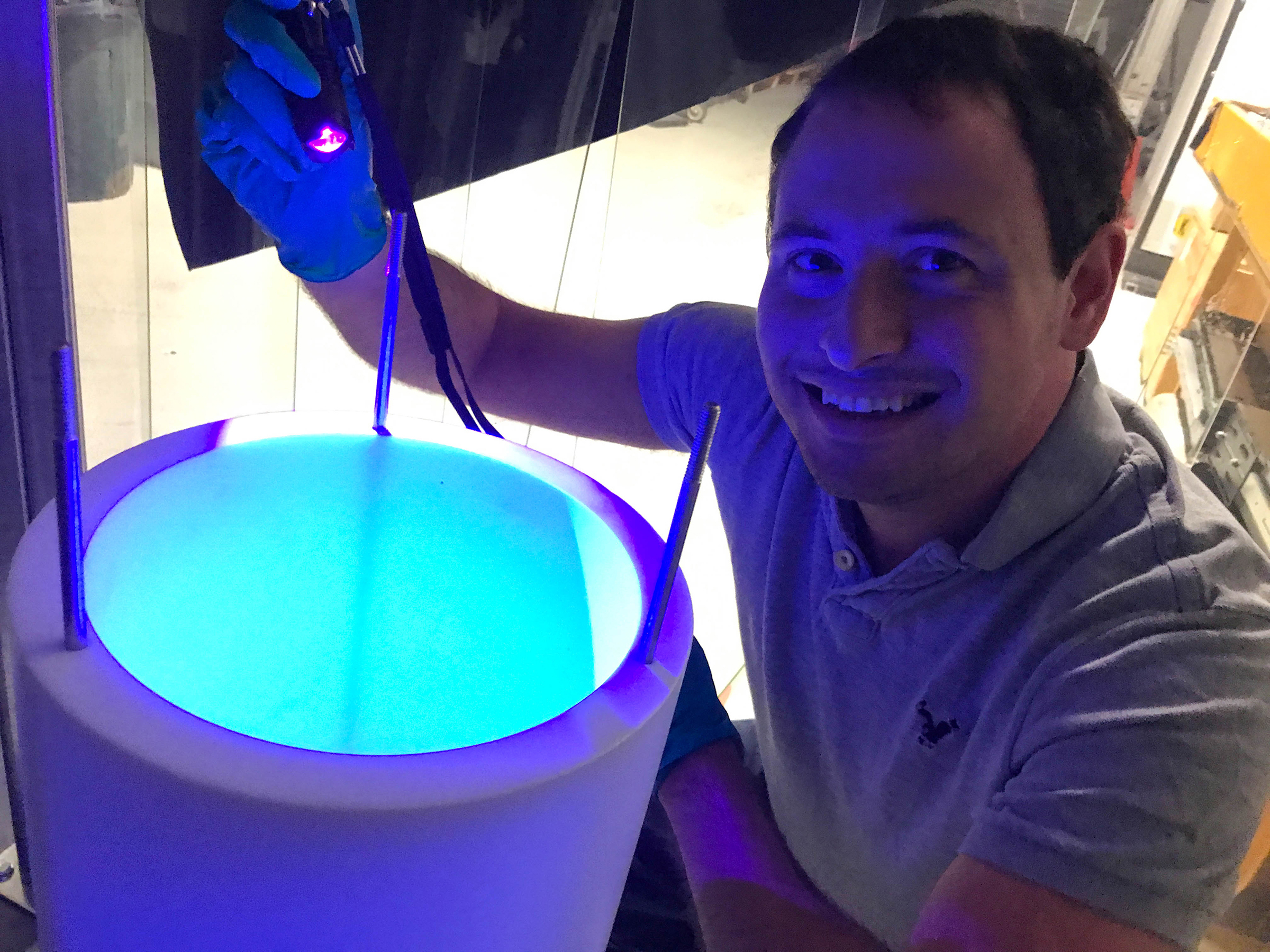
Compelling evidence of neutrino process opens physics possibilities
The COHERENT particle physics experiment at the Department of Energy’s Oak Ridge National Laboratory has firmly established the existence of a new kind of neutrino interaction.
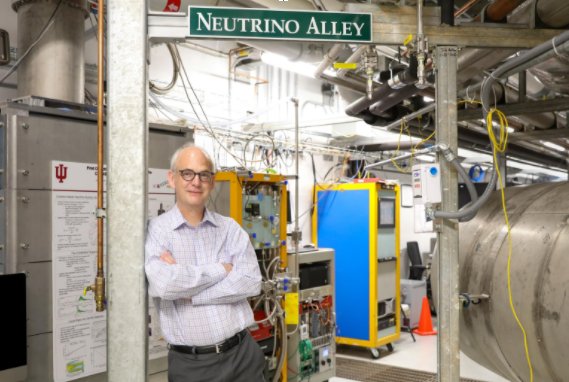
Welcome to Neutrino Alley: Q&A with ORNL’s Marcel Demarteau
Marcel Demarteau is director of the Physics Division at the Department of Energy’s Oak Ridge National Laboratory.
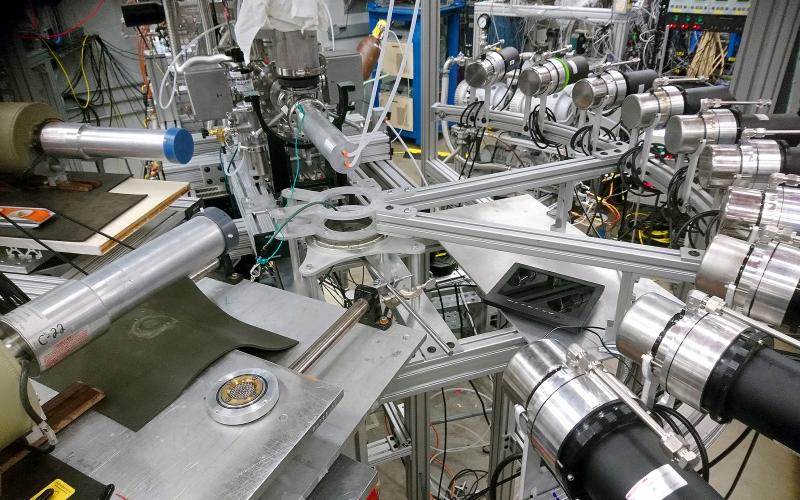
Righting a wrong, nuclear physicists improve precision of neutrino studies
Led by the Department of Energy’s Oak Ridge National Laboratory, a new study clears up a discrepancy regarding the biggest contributor of unwanted background signals in specialized detectors of neutrinos.
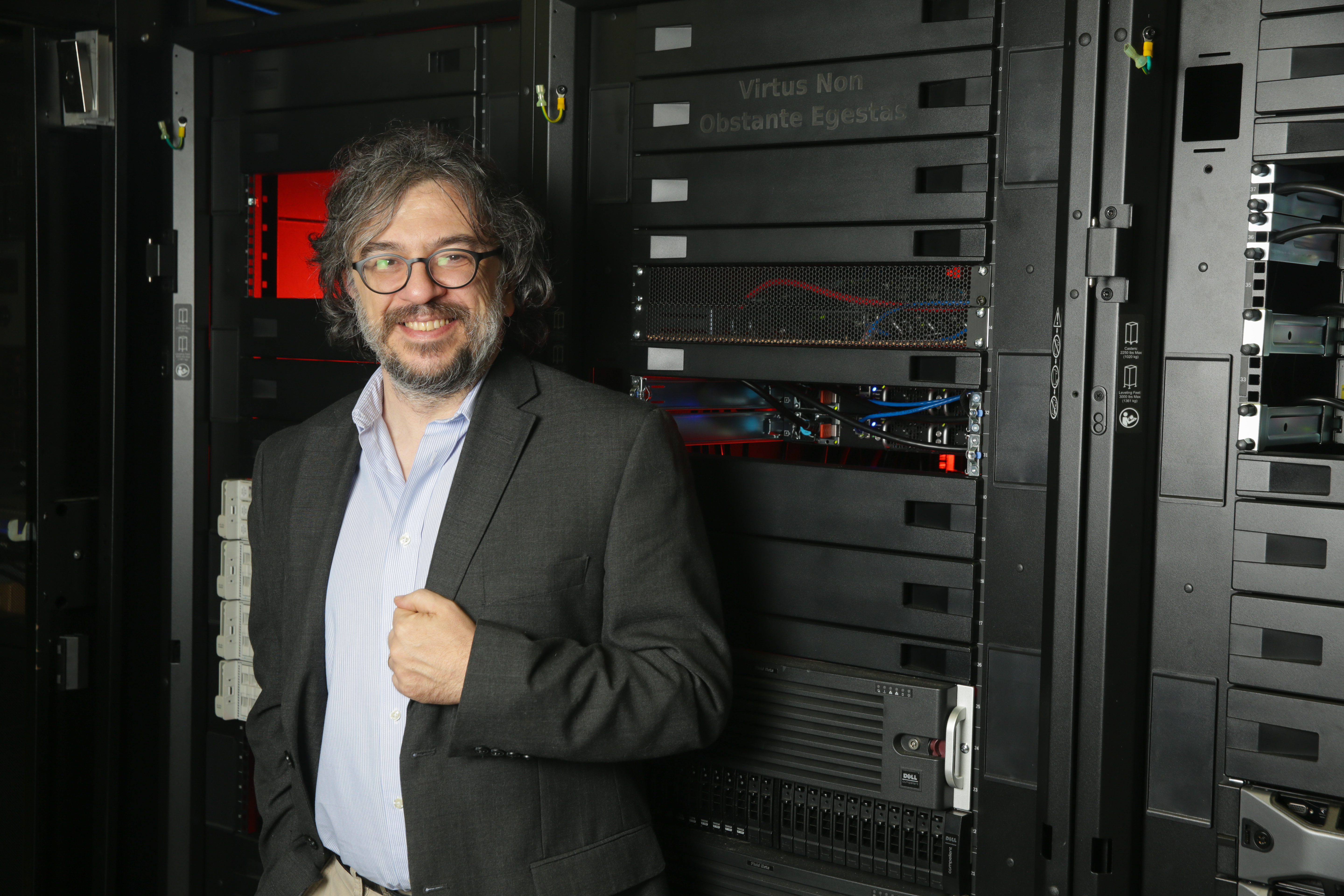
Promising lab results in quest to find naturally occurring anti-COVID therapies
So far, 35 of 125 naturally occurring compounds identified computationally at The University of Alabama in Huntsville (UAH) to have potential against COVID-19 have shown efficacy in ongoing first-batch testing at the University of Tennessee Health Science Center’s Regional Biocontainment Laboratory (UTHSC RBL) that’s the next step in the process to becoming a drug.
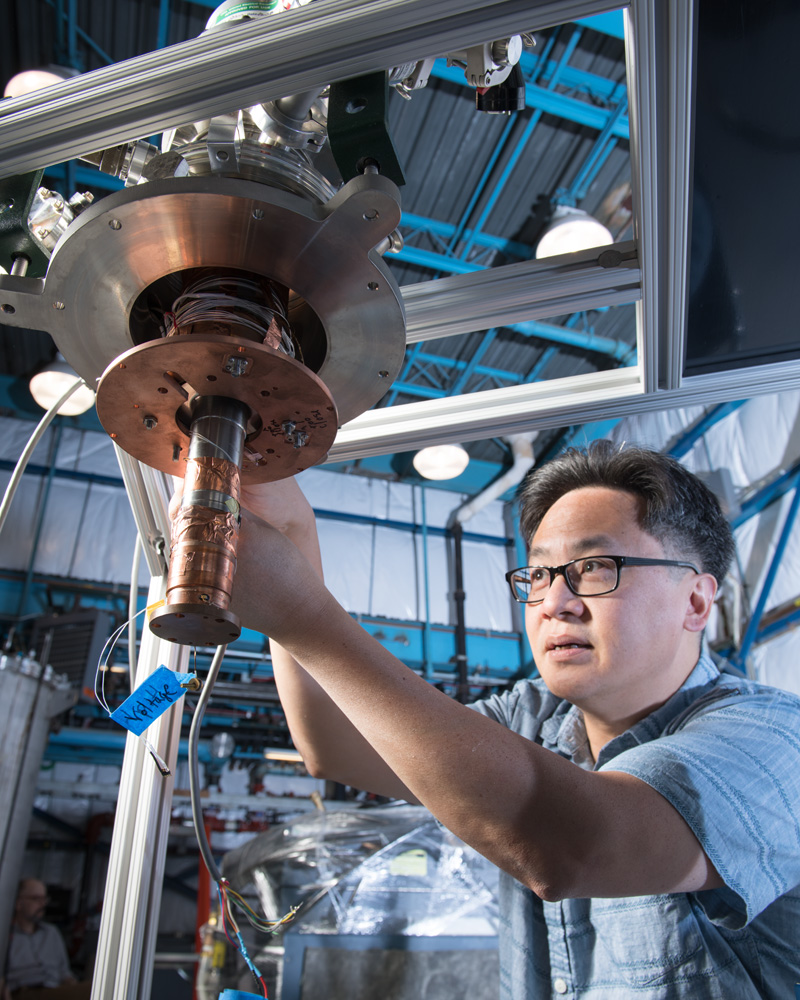
Fermilab is partner in Quantum Science Center based at Oak Ridge National Laboratory
Fermilab plays a key role in the Quantum Science Center, led by Oak Ridge National Laboratory. The center unites that Oak Ridge’s powerhouse capabilities in supercomputing and materials science with Fermilab’s world-class high-energy physics instrumentation and measurement expertise and facilities. Drawing on their experience building and operating experiments in cosmology and particle physics and in quantum information science, the Fermilab team is engaging in QSC efforts to develop novel, advanced quantum technologies.
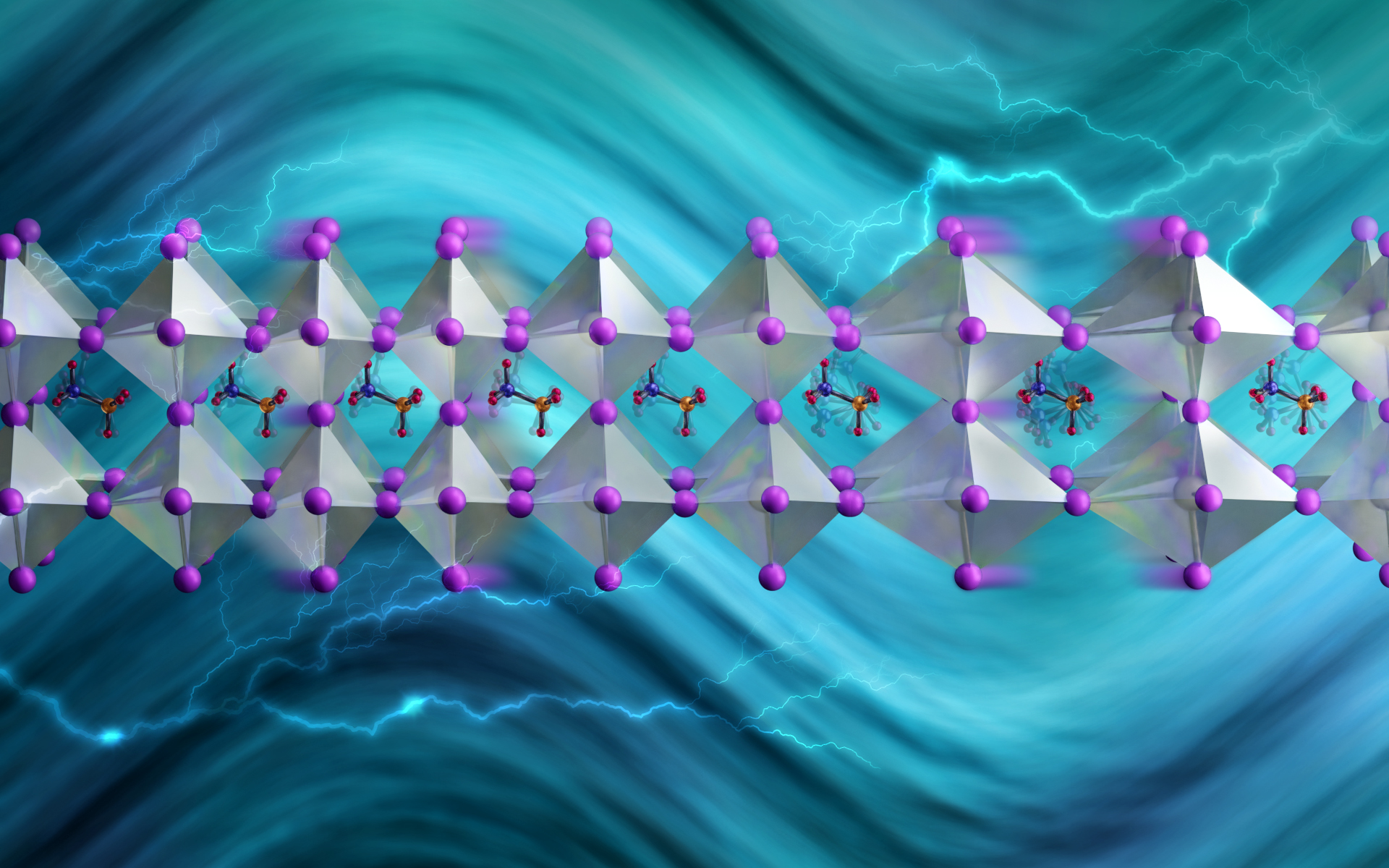
Blocking vibrations that remove heat could boost efficiency of next-gen solar cells
Led by the Department of Energy’s Oak Ridge National Laboratory and the University of Tennessee, Knoxville, a study of a solar-energy material with a bright future revealed a way to slow phonons, the waves that transport heat.